Ian Laval
Classic hand-made furniture
Vancouver Island British Columbia Canada
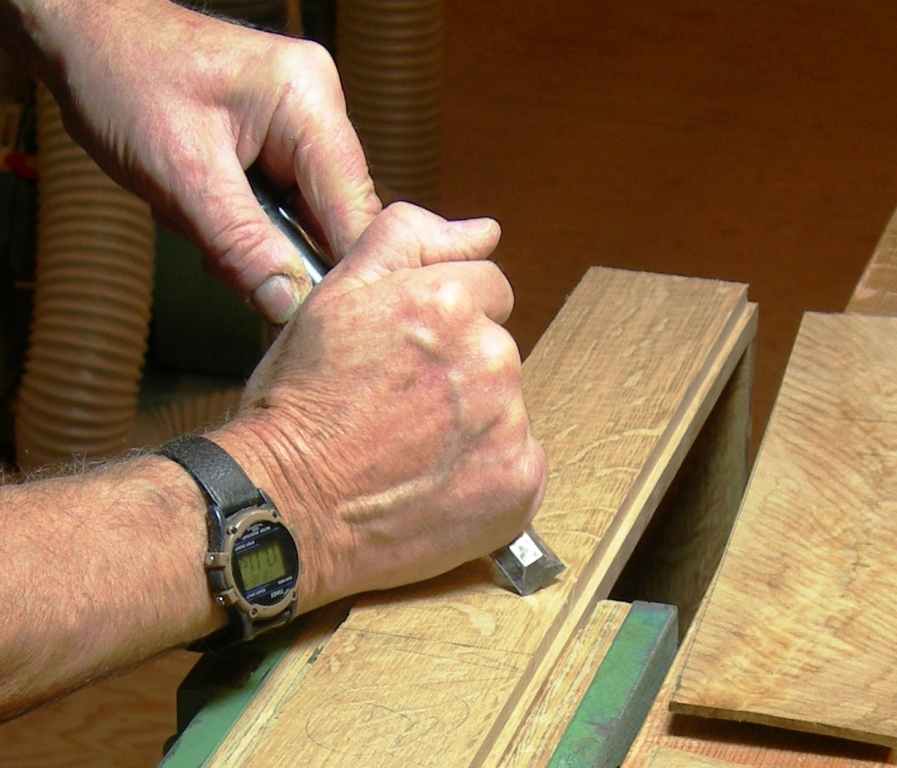

|
Ian Laval |
 |
 |
Home Showroom About Wood Archive Contact & links
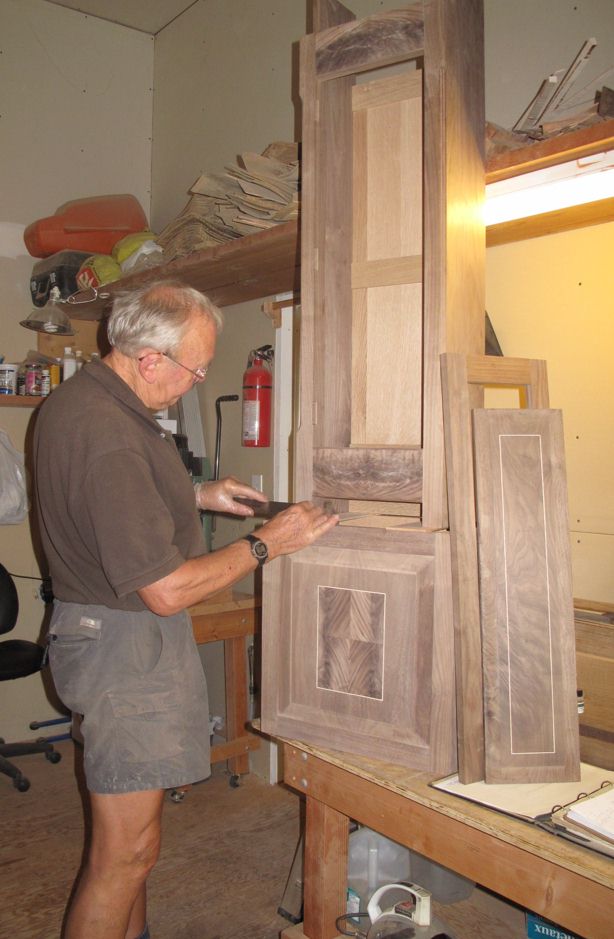 Work in progress on a walnut long-case clock.  Trunk door-panel with carving by Salish First Nations carver Simon Louie.  Mock-up of eventual brass face fitted in the hood. 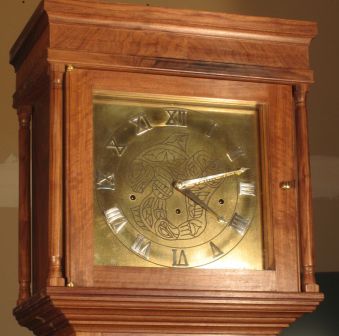 Brass face with cycle of life etched from a drawing by Simon Louie. 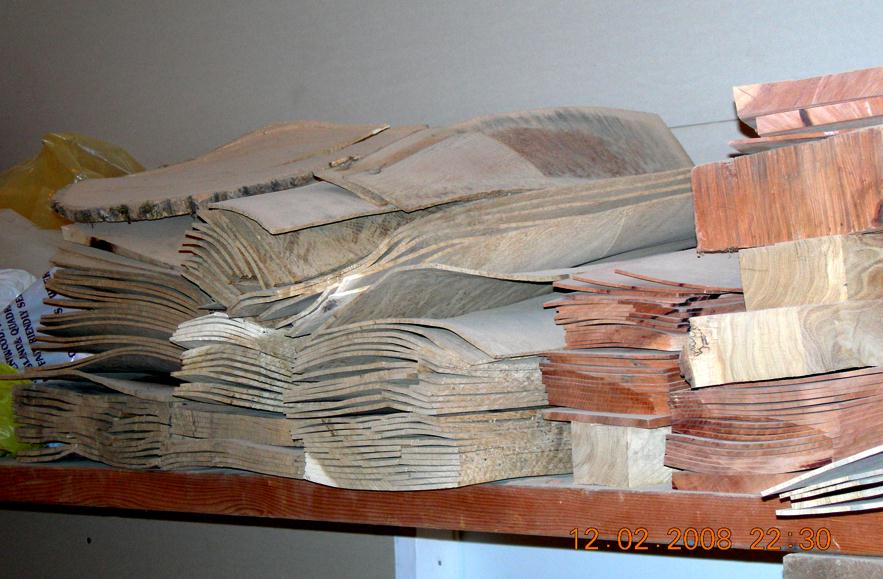 Stacks of sawn veneers. 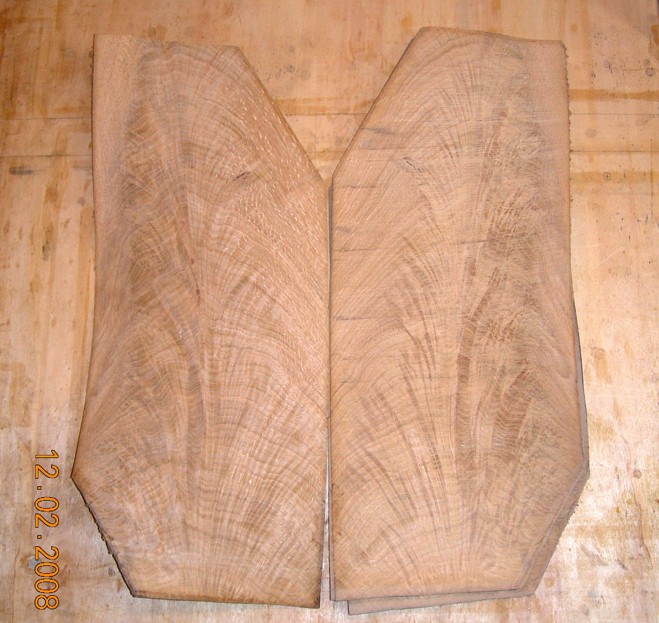 A matched pair of Garry oak crotch veneers selected for a display cabinet  The veneers are first steam-ironed to flatten them. 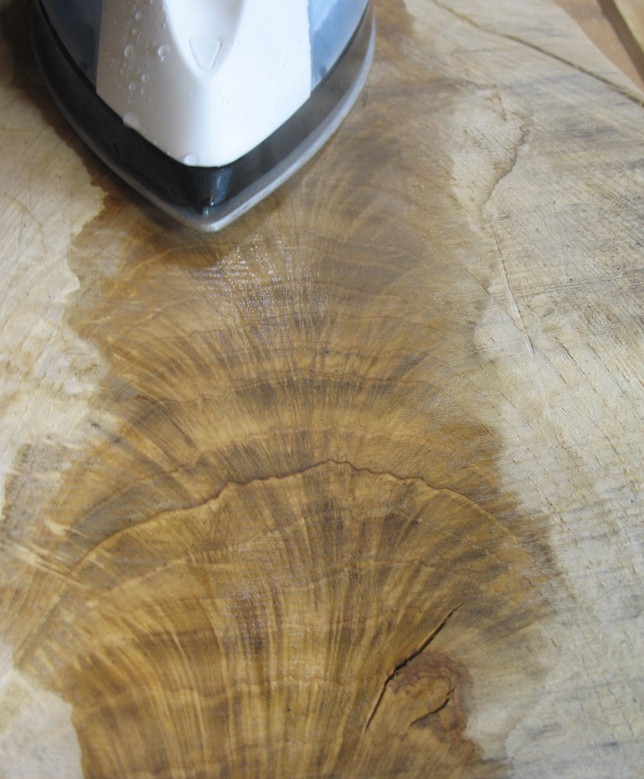 A flattened veneer leaf 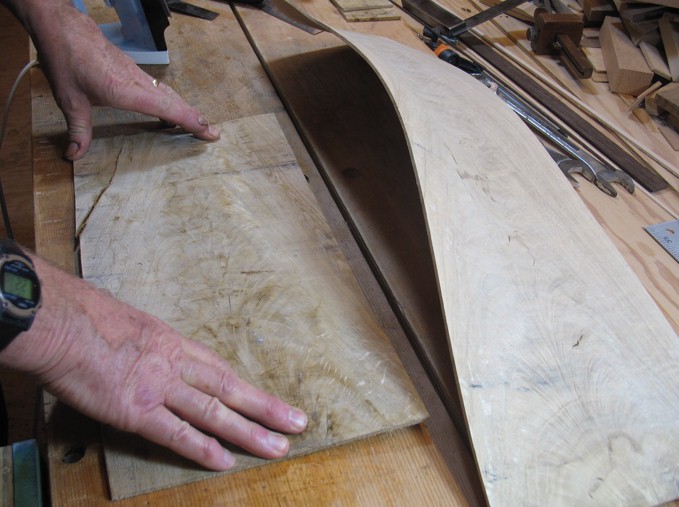 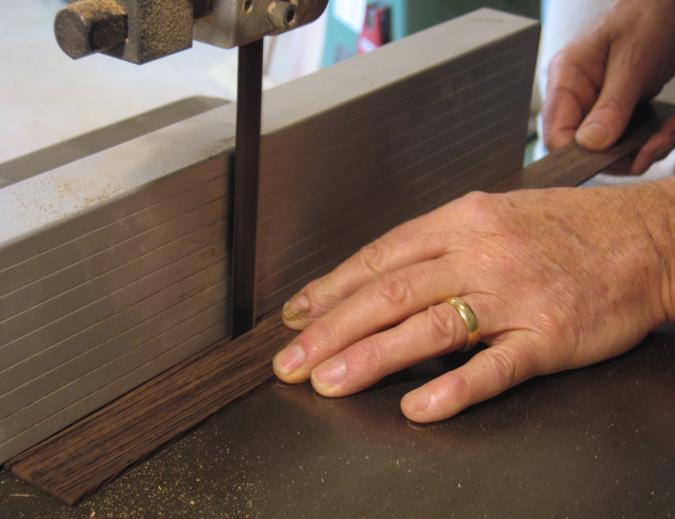 String inlay sawn on the bandsaw 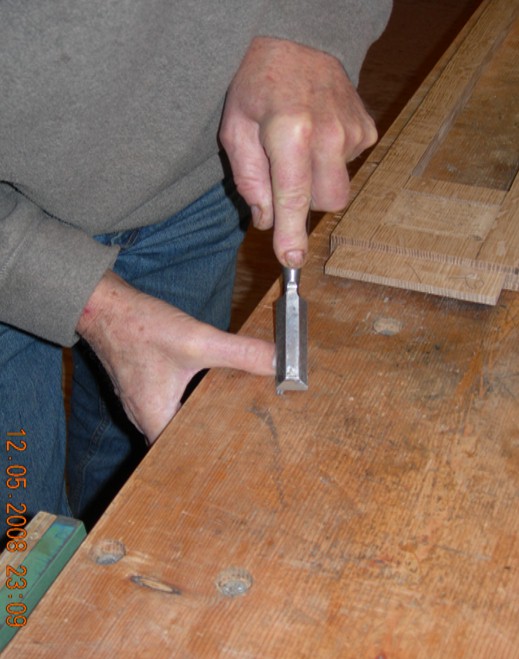 Inlay mitre being cut 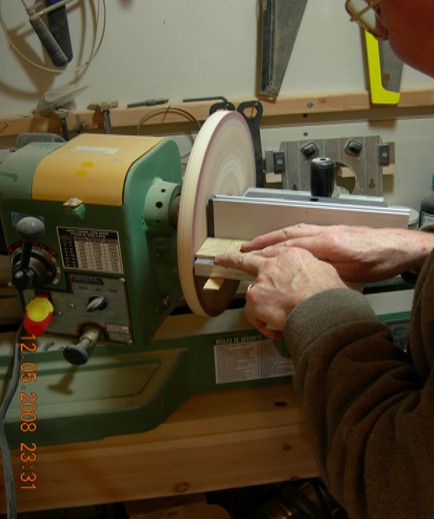 Dressing a 90 degree end on the lathe 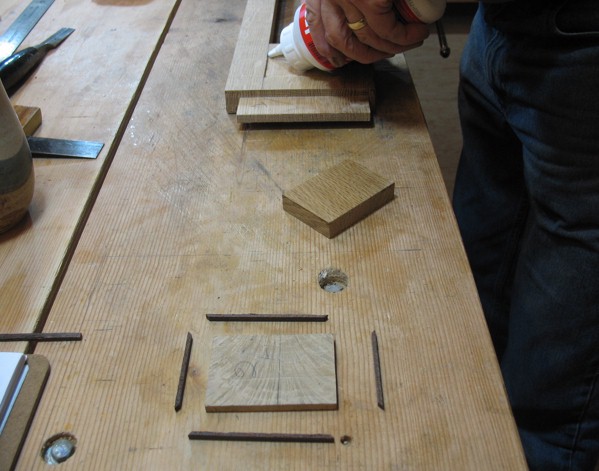 Inlay mitres cut and ready to glue in place 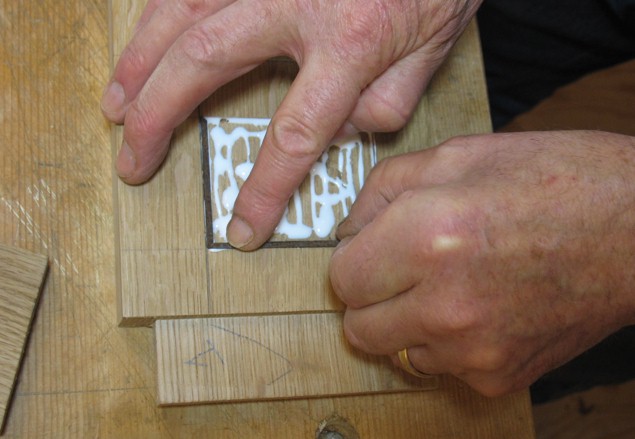 Glueing the inlay in place 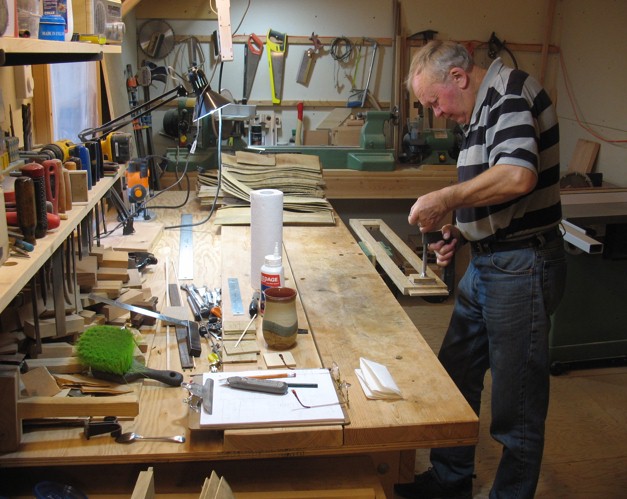 Clamping veneer squares in a drawer-front 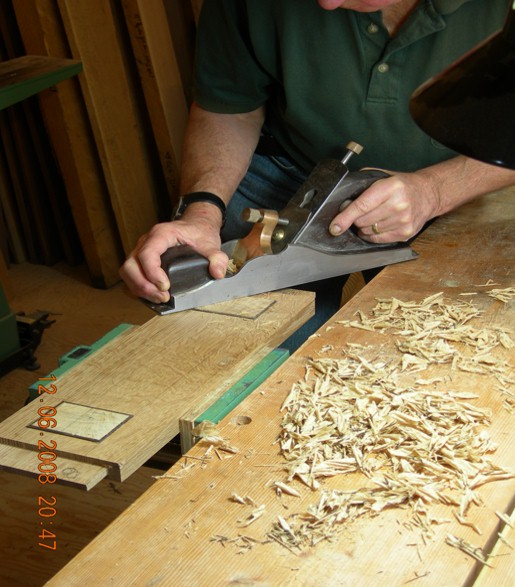 Dressing veneer and inlay with a Norris plane  The dressed veneer and inlay 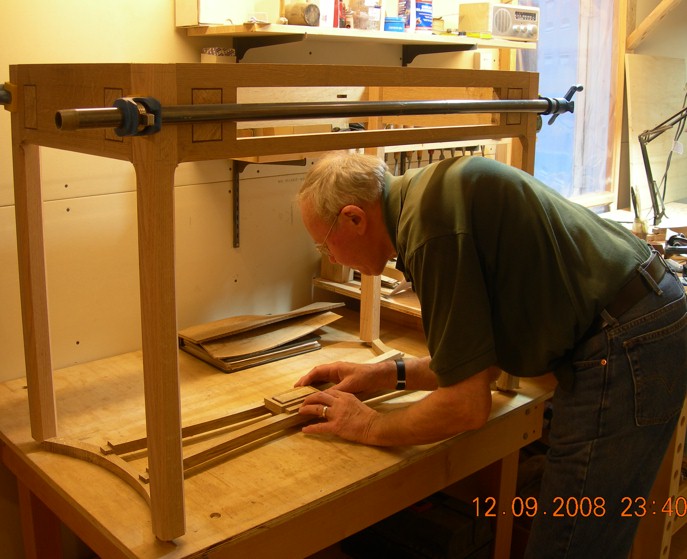 Fitting the stretcher centre-piece 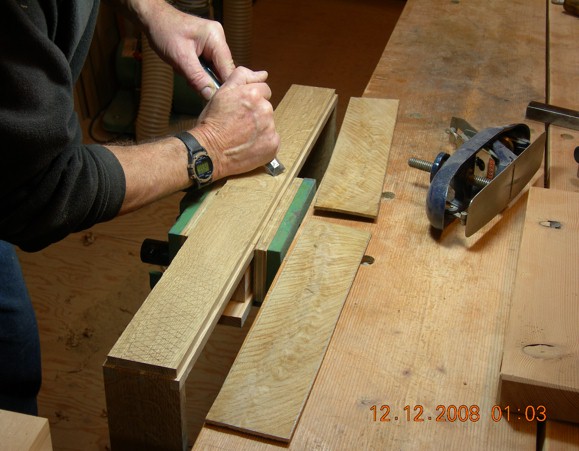 Scoring a drawer-front before laying veneer 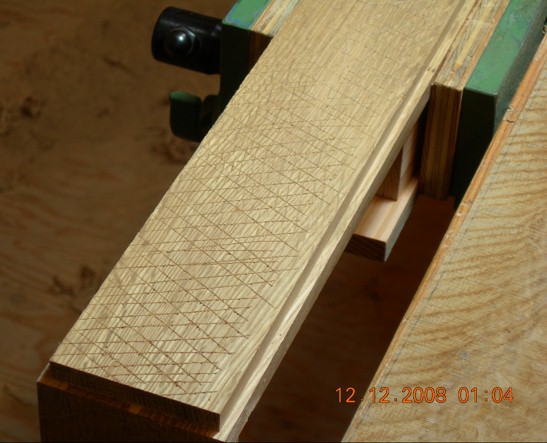 The drawer-front ready to take veneer  Clamping veneers on the drawer-front 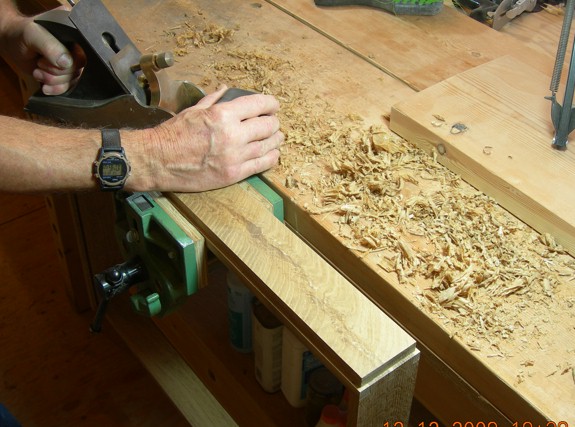 Dressing drawer-front veneers 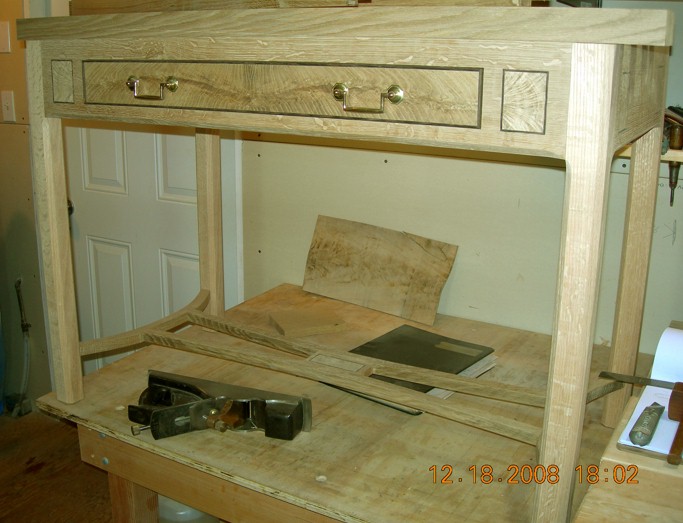 The finished drawer 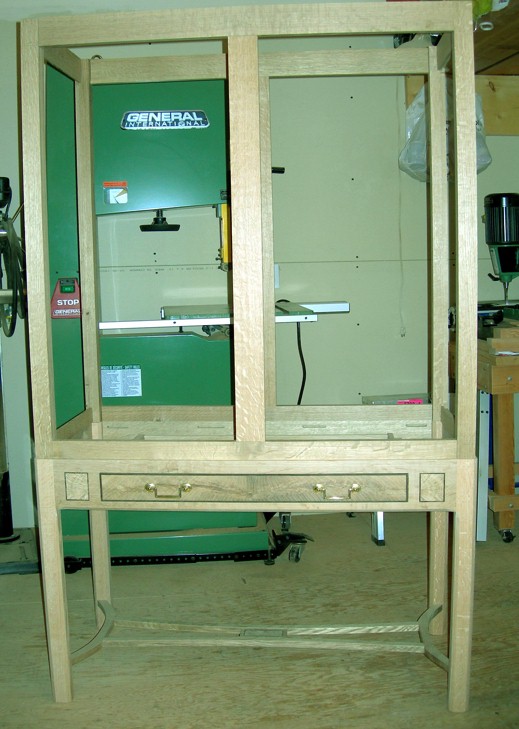 Upper cabinet dry-assembled 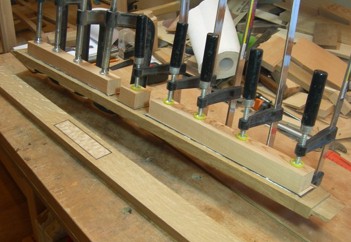 Clamping veneers and inlay on the top-rail 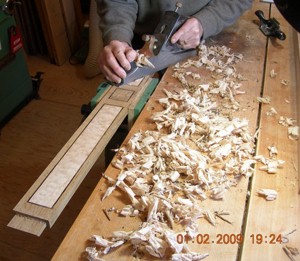 Dressing cabinet veneers  Handled scraper..... 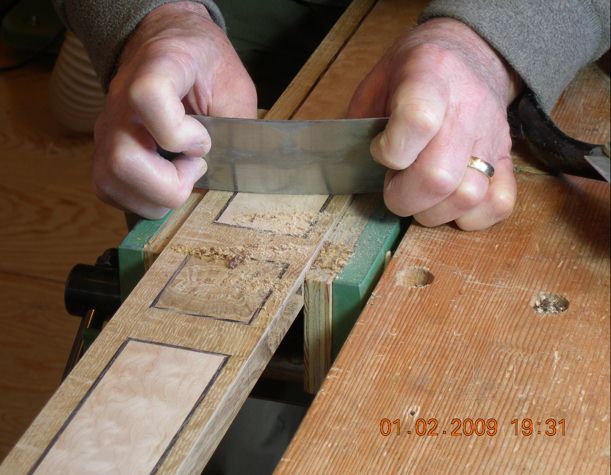 ........and flat scraper 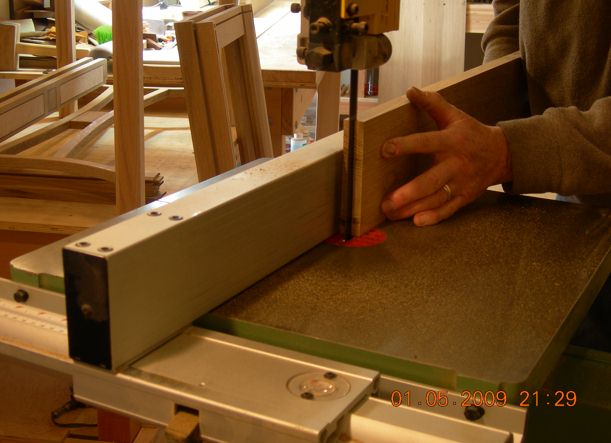 Sawing 5/16" oak on the bandsaw to make cabinet back panels 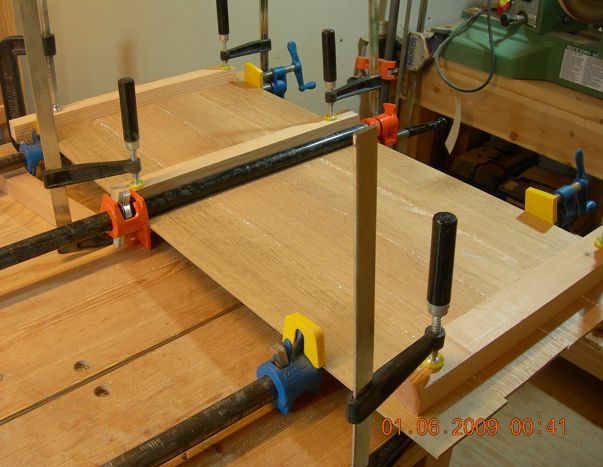 Panels glued up  Upper section tenons cut 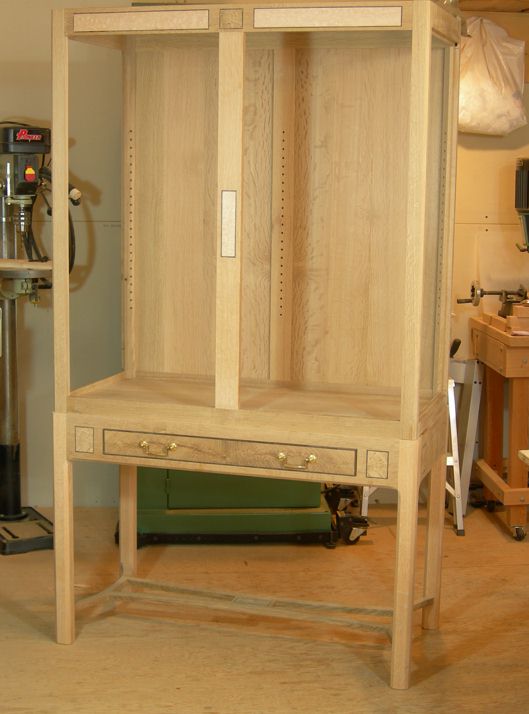 Upper section finally assembled 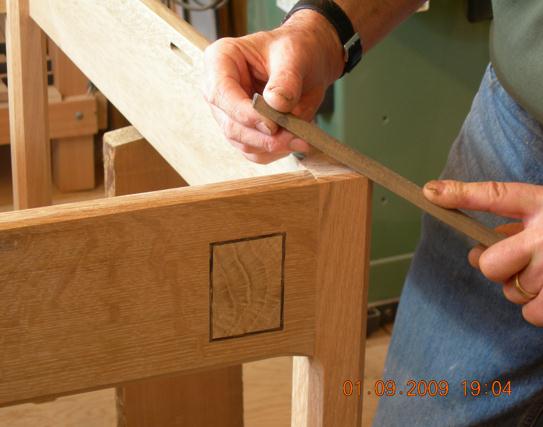 Chamfering edges of the display cabinet's lower section 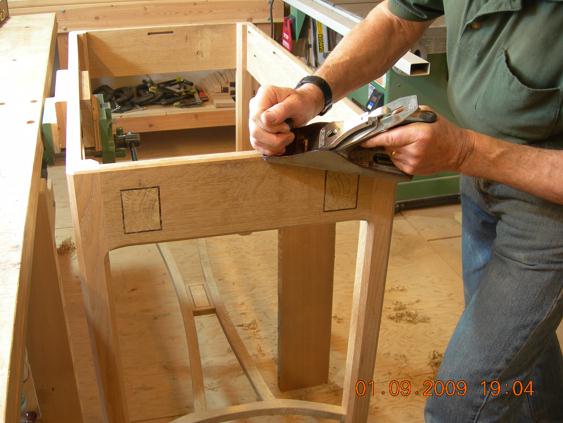 Dressing chamfers with the plane 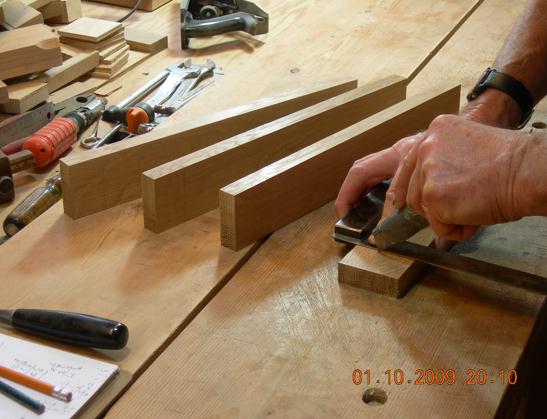 Marking out drawer dovetails  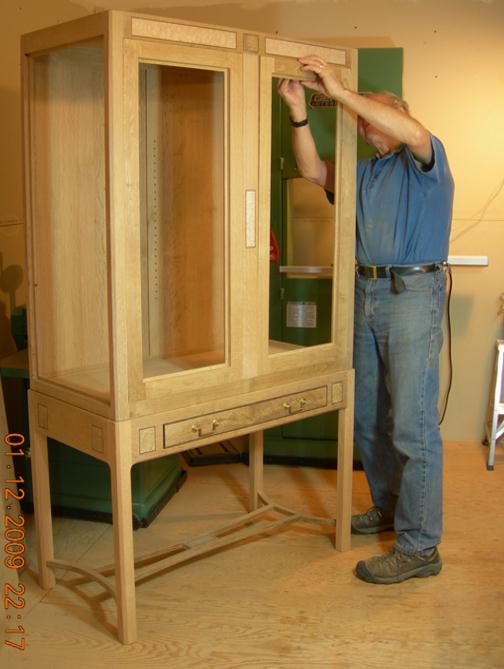 Final adjustments to upper section 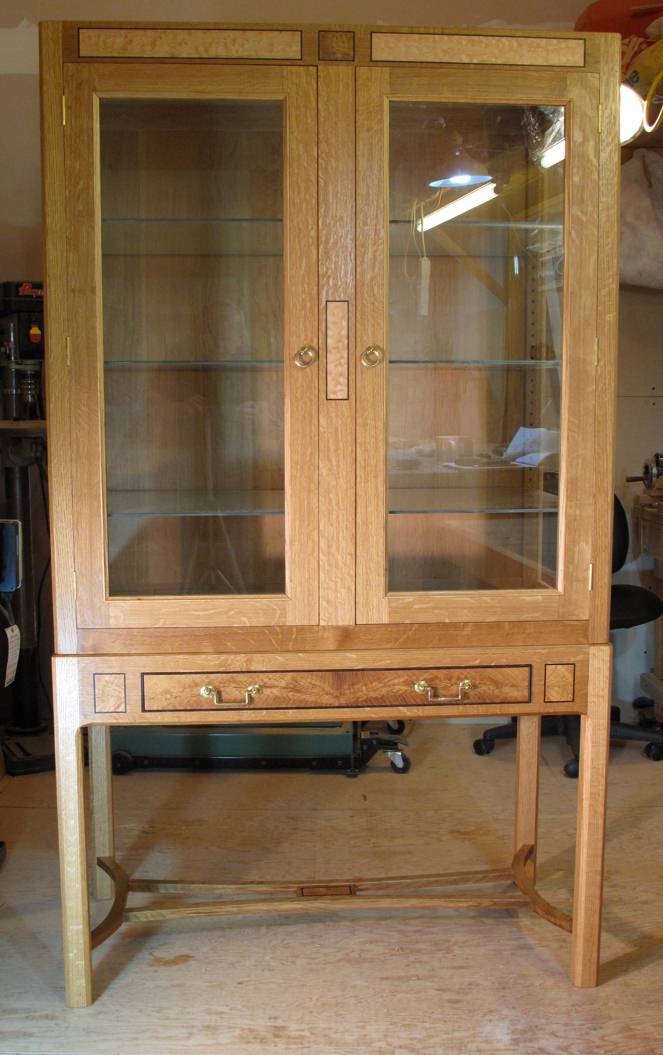 The finished display cabinet |
This series of images illustrates some of the process involved in building a traditional piece of furniture. Ian Laval makes extensive use of sawn veneers, cut from the same local trees growing within reach of his workshop. These veneers are sawn -- generally one-eighth of an inch thick -- from fresh, green timber. They are found in crotches, burrs and a variety of interesting places in the tree revealed in processing. They are then generally laid in book-matched pairs or quarters to embellish the furniture. |